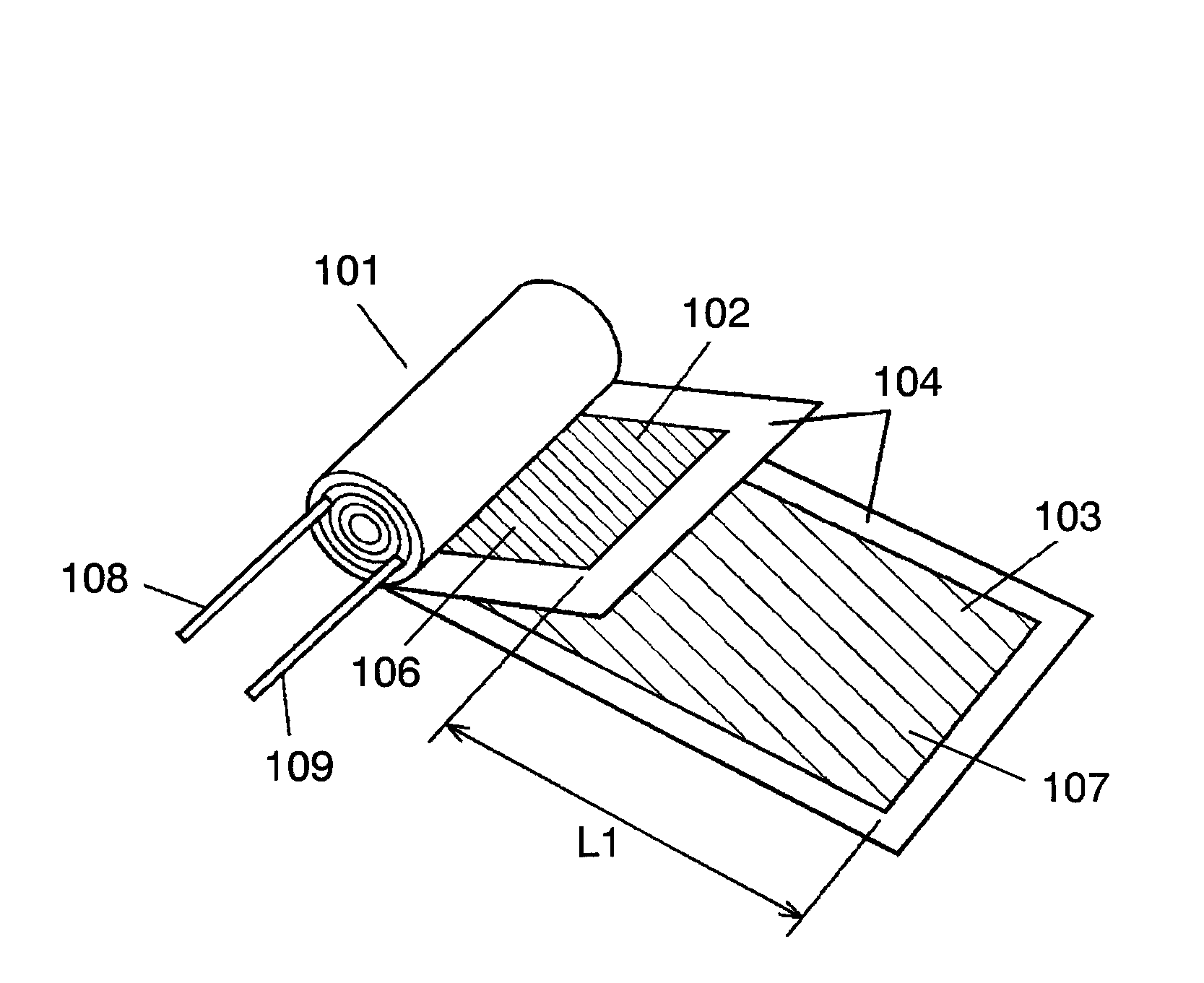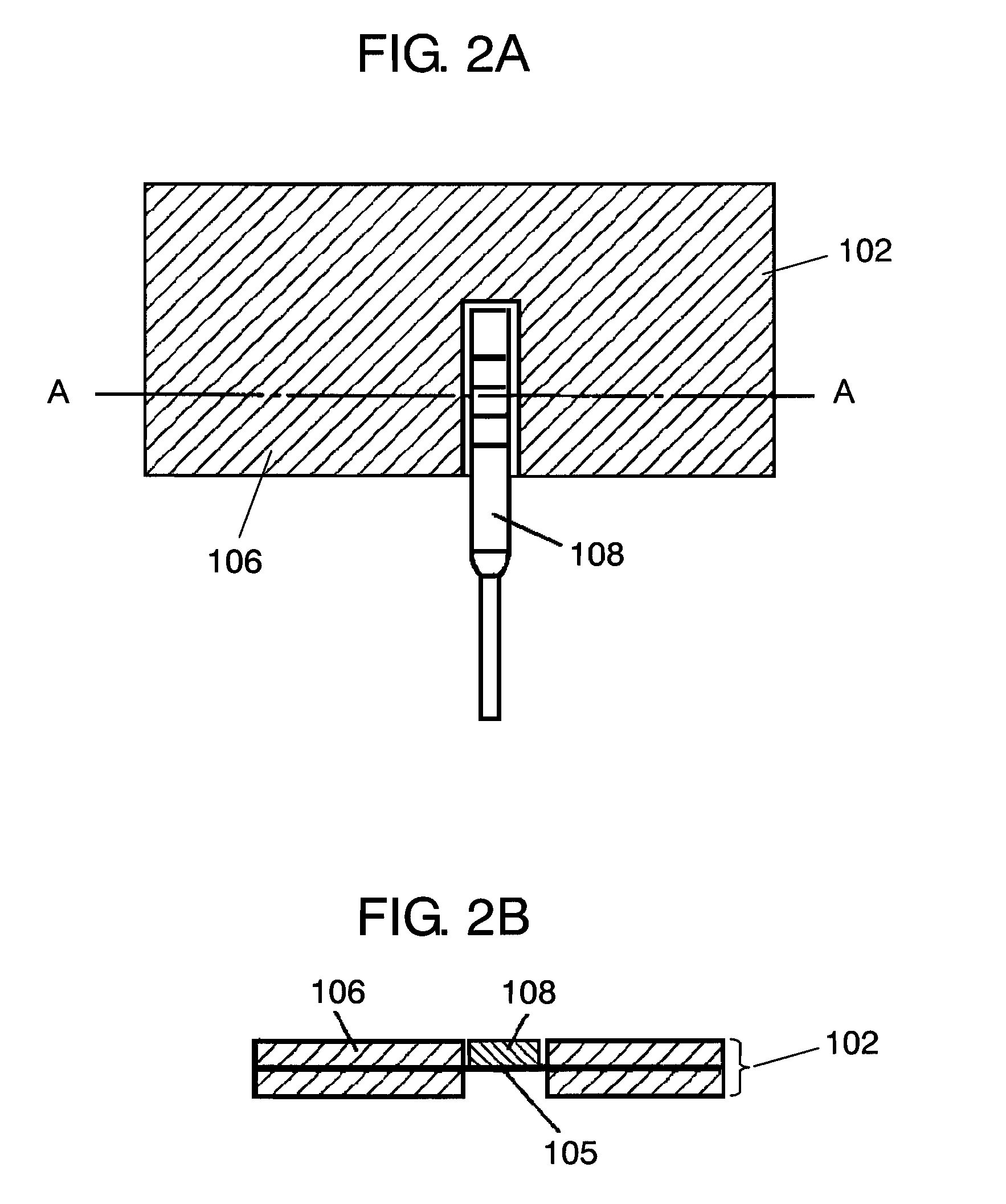Wound electric double-layer capacitor
a double-layer capacitor and electric double-layer technology, applied in the direction of electrolytic capacitors, liquid electrolytic capacitors, electrochemical generators, etc., can solve the problems of gas generation, resistance increase, capacity reduction, character degradation, etc., to reduce the characteristic degradation, suppress the electrochemical reaction, and high performance
- Summary
- Abstract
- Description
- Claims
- Application Information
AI Technical Summary
Benefits of technology
Problems solved by technology
Method used
Image
Examples
first exemplary embodiment
[0064]The first exemplary embodiment will be described hereinafter.
[0065]FIG. 1 is a developed perspective view showing a structure of a capacitor element used in a wound electric double-layer capacitor in accordance with the first exemplary embodiment of the present invention. In FIG. 1, capacitor element 101 is formed by winding positive electrode 102 and negative electrode 103 while separator 104 is interposed between them.
[0066]Positive electrode 102 is formed by disposing polarized electrode layers 106 on both surfaces of current collector 105 made of a metal foil described later, and negative electrode 103 is formed by disposing polarized electrode layers 107 on both surfaces of current collector 105. Positive electrode 102 is coupled to positive electrode lead wire 108, and negative electrode 103 is coupled to negative electrode lead wire 109. The coupling states of positive electrode lead wire 108 and negative electrode lead wire 109 are described below. As shown in detail i...
example 1
[0075]A high-purity aluminum foil (Al: 99.99% or more) with a thickness of 30 μm is used as the current collector made of a metal foil, and is electrolyte-etched in a hydrochloric-acid-based etchant to roughen the surface of the aluminum foil.
[0076]Next, polarized electrode layers are formed on both surfaces of this aluminum foil. For forming the polarized electrode layers, activated carbon powder of phenol resin base of an average grain size of 5 μm, carbon black of an average grain size of 0.05 μm as a conductive adding agent, and a water-soluble binder solution in which carboxymethyl cellulose (CMC) is dissolved are mixed at weight percentage of 10:2:1, and are sufficiently kneaded by a kneader. Dispersion solvent of methanol and water is gradually added to the kneaded product, and the resultant product is further kneaded to produce paste of a predetermined viscosity. Then, this paste is applied to the surface of the aluminum foil, and dried in the atmosphere at 100° C. for one h...
example 2
[0082]A wound electric double-layer capacitor is produced similarly to example 1 except that the positive electrode and negative electrode are disposed as shown in FIG. 3, width W1 of the positive electrode is set at 40 mm, and width W2 of the negative electrode is set at 44 mm.
PUM
 Login to View More
Login to View More Abstract
Description
Claims
Application Information
 Login to View More
Login to View More - R&D
- Intellectual Property
- Life Sciences
- Materials
- Tech Scout
- Unparalleled Data Quality
- Higher Quality Content
- 60% Fewer Hallucinations
Browse by: Latest US Patents, China's latest patents, Technical Efficacy Thesaurus, Application Domain, Technology Topic, Popular Technical Reports.
© 2025 PatSnap. All rights reserved.Legal|Privacy policy|Modern Slavery Act Transparency Statement|Sitemap|About US| Contact US: help@patsnap.com



